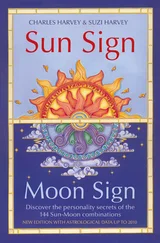An encouraging phrase meaning to fight with one’s might or do one’s best
Furikake:
A seasoning to sprinkle over white rice
Furin:
A traditional Japanese wind chime
Gaijin:
A person from a foreign country
Ganbare:
“Do your best,” said to encourage one in academics, sports or life
Genkan:
The foyer or entrance of a Japanese building. Usually the floor of the genkan is lower than the rest of the building, to keep shoes and outside things separate from the clean raised floor inside
Gomen:
“I’m sorry”
Guzen da:
“What a coincidence!”
Gyoza:
Dumplings
Gyudon:
Sauced beef on rice
Hai?:
“Yes?” but used as it is in Ink, it expresses surprise, such as “I’m sorry?”
Hakama:
The skirtlike clothing worn by kendouka
Hana yori dango:
“Dumplings over flowers,” meaning substance over appearance
Hanami:
Flower viewing, in particular cherry blossoms
Hanshi:
Special paper used for calligraphy
Hazui:
“Embarrassing,” slang form of hazukashii
Hebi:
Snakes
Hidoi na:
“You’re cruel!” or “That’s mean/harsh!”
Ii ka:
“Okay?”
Ii kara:
“It’s okay (so just do it)”
Ikemen:
A good-looking guy
Ikuzo:
“Let’s go,” said in a tough slang
Itadakimasu:
“I’m going to receive,” said before a meal like “bon appétit”
I-te/Itai:
“Ouch” or “It hurts”
Ittekimasu:
“I’m leaving (and coming back),” said when leaving the home
Itterasshai:
“Go (and come back) safely,” said to the one leaving home
Jaa ne:
“See you later”
Kado:
The tradion of flower arranging, also known as ikebana
Kakigori:
Shaved ice with syrup, much like a snow cone
Kankenai darou:
“It’s none of your business” or “It doesn’t concern you”
Karaage:
Bite-size fried chicken
Kata:
A series of memorized movements in kendo or other mar-tial arts
Keigoki:
The soft top worn under the kendo armor
Keiji-san:
Detective
Keitai:
Cell phone
Kendouka:
A kendo participant
Ki wo tsukete na:
“Take care”
Kiai:
A shout made by kendouka to intimidate opponents and tighten stomach muscles for self-defense
Kiri-kaeshi:
A kendo exercise drill
Koibito:
“Lovers,” dating couple
Kote:
Gloves worn during kendo
Kun:
Suffix generally used for guy friends
Maa:
“Well,” but it can be used as a subtle way of affirming something (“Well, yes”)
Maji de:
“No way”
Manju:
Small Japanese cakes, usually with some sort of filling inside
Matte:
“Wait”
Men:
The helmet warn during kendo
Migi-kote:
The right glove
Mieta:
“I saw it”
Momiji:
Maple tree
Moshi mosh(i):
Said when answering the phone
Mou ii:
“That’s enough”
Naaa:
“Hey” or “You know,” a filler word that indicates the speaker is going to say something
Nasubi:
Eggplant
Ne:
“Isn’t it?” It can also be used as “Hey!” to get someone’s attention (like “ Ne , Tanaka”)
Nerikiri:
A sweet white-bean-paste cake eaten during a tea ceremony
Nikujaga:
A Japanese dish of meat and potatoes
Noren:
An awning hung over the doorway of a shop
Ohayo:
“Good morning”
Oi:
“Hey”
Okaeri:
“Welcome home,” said when one arrives home
Okonomiyaki:
A Japanese pancake or pizza-type dish where diners choose the ingredients that go into the dish, such as cabbage or other veggies, noodles, meat or fish
Okyaku-sama:
Guests/customers
Omiyage:
Souvenirs
Onigiri:
Rice balls
Ore sa, kimi no koto ga...(suki):
“I like you” or more literally “About you, I, you know… (like you).” This is a common way for a boy to confess he likes someone
O-Torii:
The giant orange Shinto gate at Itsukushima Shrine
Peko peko:
“I’m starving,” usually said by younger children or girls to be cute
Purikura:
Print Club, little sticker pictures taken and printed by machines at arcades or department stores
Purin:
A popular Japanese pudding
Sado:
The tradition of tea ceremony
Saitei:
“You’re the worst,” something despicable
Sakura:
The cherry blossoms
Sankyu:
“Thank you”
Sasa:
A bamboo tree used for Tanabata festivities
Seifuku:
Japanese school uniform based on the look of old sailor uniforms
Senpai:
A kneeling stance used in kendo
Senpai:
A student older than the speaker
Shinai:
A sword made of bamboo slats tied together, used for kendo
Shinkansen:
The bullet train
Shoudo:
The tradition of calligraphy
Shouji:
A traditional rice-paper door
Sonna wake nai jan:
“It’s not like that!”
Sou da na:
“I guess that’s right.”
Sou ka:
“Is that right?”
Sou mitai:
“Looks that way”
Sou ne:
“You’re right, aren’t you?” or “That’s right, isn’t it?”
Su-ge:
“Wow,” slang form of sugoi Suki:
“I like you”
Sumi:
An ink stick, ground against the suzuri to make ink Sunpu-jou:
Sunpu Castle
Suzuri:
An inkstone, used in making liquid ink
Tadaima:
“I’m home,” said by one arriving home
Taihen da ne:
“That’s tough” or “That’s a difficult situation.”
Tanabata:
A holiday celebrating the stars Altair and Vega reuniting in the sky
Tatami:
Traditional mat flooring made of woven straw
Te m e :
A really foul way to call someone “you.” Usage is not ad-vised!
Tenugui:
A headband tied under the men helmet Tomodachi:
“Friends”
Читать дальше
Конец ознакомительного отрывка
Купить книгу










